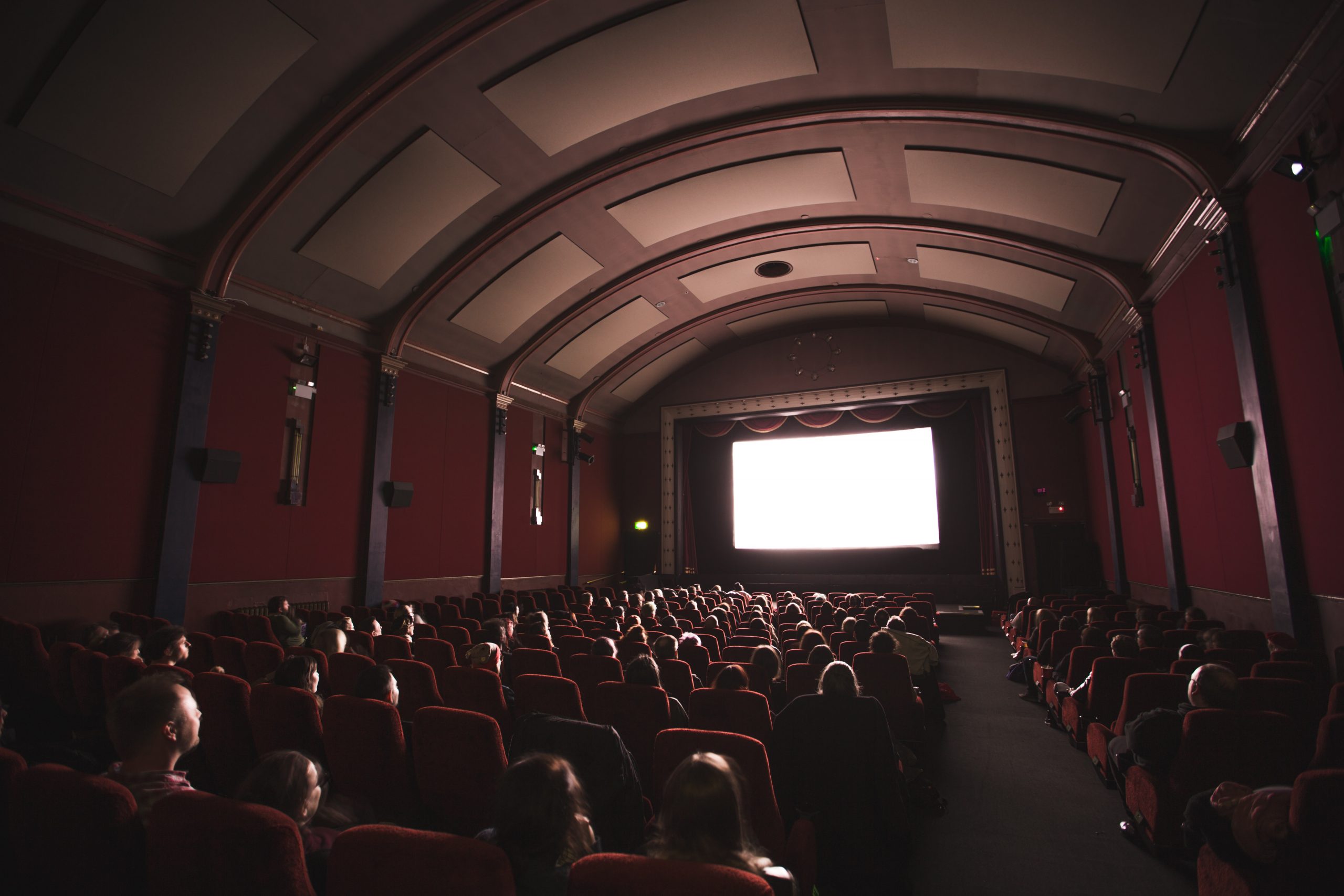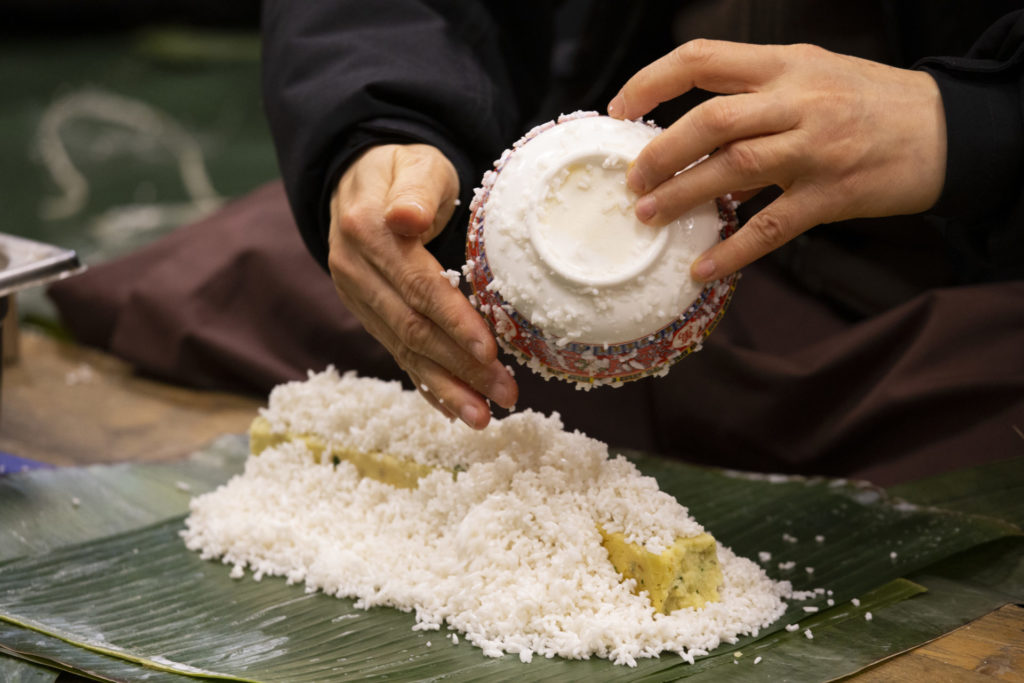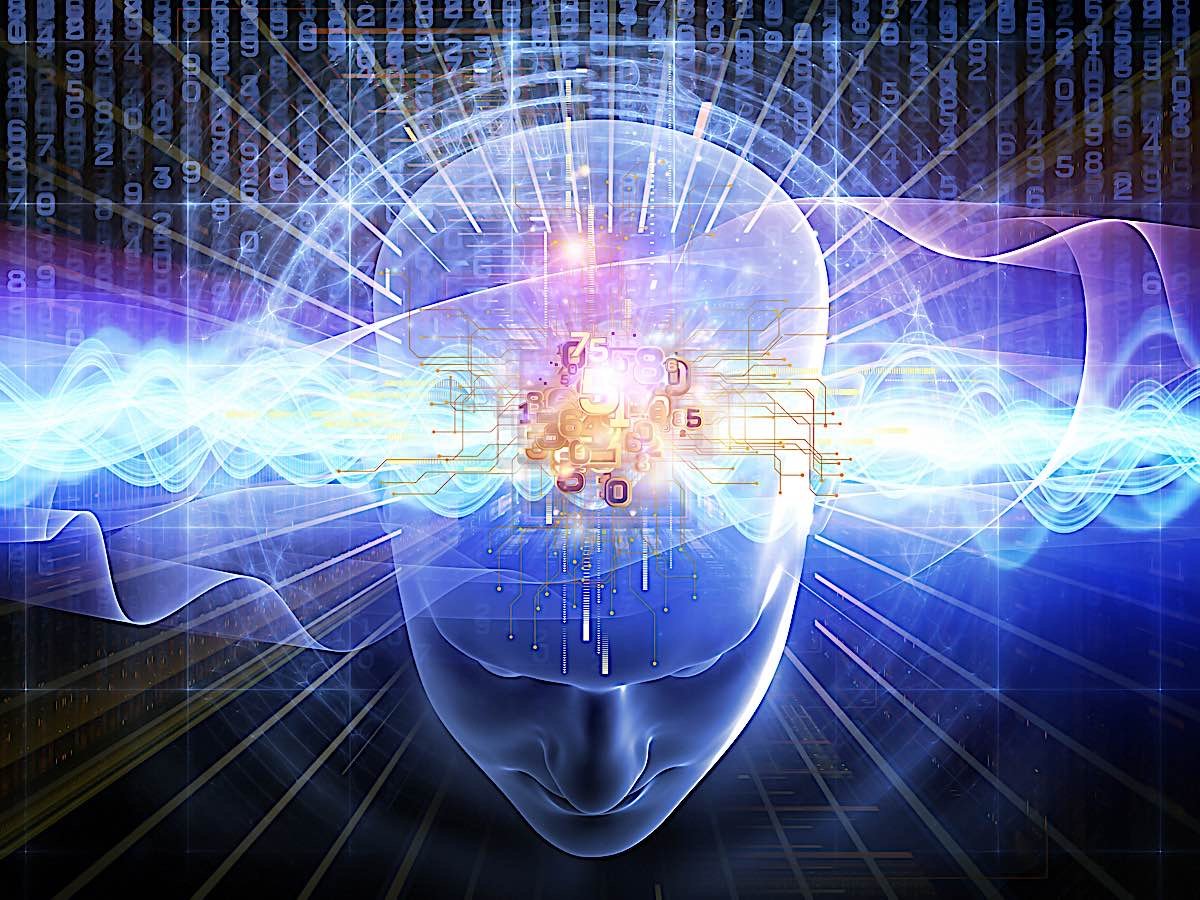La Iluminación Es Como Ir Al Cine
¡Bienvenidos a nuestra nueva sección de Dharma en Español! Aquí en Tricycle reconocemos la importancia de seguir ofreciendo el dharma a los practicantes de una amplia gama de comunidades, y dado el creciente interés en el dharma en español,...

 ¡Bienvenidos a nuestra nueva sección de Dharma en Español! Aquí en Tricycle reconocemos la importancia de seguir ofreciendo el dharma a los practicantes de una amplia gama de comunidades, y dado el creciente interés en el dharma en español, hemos puesto en marcha una nueva iniciativa para ofrecer enseñanzas originales y traducidas. Profesores de habla hispana de Latinoamérica y Europa han contribuido generosamente con charlas de dharma y prácticas que publicaremos en nuestra página web y en la revista, así como con artículos seleccionados de nuestra Sección de Enseñanzas. Esperamos que estos artículos cuidadosamente seleccionados les inspiren, desafíen y apoyen, y que también animen a todos aquellos que buscan la liberación a recorrer el camino de la práctica.
¡Bienvenidos a nuestra nueva sección de Dharma en Español! Aquí en Tricycle reconocemos la importancia de seguir ofreciendo el dharma a los practicantes de una amplia gama de comunidades, y dado el creciente interés en el dharma en español, hemos puesto en marcha una nueva iniciativa para ofrecer enseñanzas originales y traducidas. Profesores de habla hispana de Latinoamérica y Europa han contribuido generosamente con charlas de dharma y prácticas que publicaremos en nuestra página web y en la revista, así como con artículos seleccionados de nuestra Sección de Enseñanzas. Esperamos que estos artículos cuidadosamente seleccionados les inspiren, desafíen y apoyen, y que también animen a todos aquellos que buscan la liberación a recorrer el camino de la práctica.
No dudes en hacernos llegar tus comentarios o sugerencias. Nos encantaría saber de ustedes.
Welcome to our new Dharma in Spanish section! Here at Tricycle we recognize the importance of continuing to make the dharma available to practitioners across a wide range of communities, and given the increased interest in Spanish dharma, we’ve started a new initiative to offer ongoing original and translated teachings. Spanish speaking teachers from both Latin America and Europe have generously contributed dharma talks and practice pieces that we’ll be publishing in our website and print magazine, as well as selected pieces from our Teachings section. It’s our hope that these carefully curated offerings will inspire, challenge, and support you and encourage all those seeking liberation to walk the path of practice.
Please don’t hesitate to reach out with your comments or suggestions. We’d love to hear from you.
***
En el budismo existe la expresión “el dedo apuntando a la luna,” lo cual es una forma de hablar acerca de nuestra naturaleza verdadera. Esta es una tarea sutil y compleja pues es muy fácil quedarnos enfocados en el dedo y perder de vista la luna. (En el Surangama Sutra, el Buda usó esta analogía para establecer la diferencia entre las enseñanzas—el dedo—y nuestra mente o naturaleza verdadera—la luna.) ¿Cómo usar palabras para describir aquello que está más allá de las palabras? El legendario filósofo chino Lao Tse empieza su obra cumbre, el Tao te ching, diciendo “El Tao que puede ser expresado, no es el Tao perpétuo.” Aun así, Lao Tse escribió ochenta y un versos sobre aquello que no puede ser expresado.
Aunque sea una tarea imposible, muchos maestros han hecho grandes esfuerzos por transmitirnos la sabiduría de nuestra propia naturaleza con el propósito de inspirarnos a descubrirla por nosotros mismos, ya que, bien sea que la reconozcamos o no, esta naturaleza está totalmente presente y disponible para nosotros aquí y ahora. De hecho, está presente en todos los seres sintientes, desde una hormiga hasta el Buda mismo. Existe una metáfora que puede apuntarnos hacia el reconocimiento de esta naturaleza, pero a la cual los grandes maestros no tenían acceso ya que aún no había sido inventada: el cine.
Cuando utilizo esta metáfora en mis charlas, empiezo por pedirle a los asistentes que recuerden la última vez que fueron al cine y les pregunto, “¿Qué es aquello sin lo cual la película no podría existir, y al mismo tiempo no se ve afectado por nada de lo que sucede en la historia?” Luego les digo que la respuesta debe ser tan concreta y simple que hasta un niño de seis años la podrá entender. Antes de seguir leyendo, tómate un momento para pensar cómo responderías.
Eventualmente, alguno de los asistentes encuentra la respuesta que estoy buscando: la pantalla.
Luego, empiezo a hacer preguntas más específicas sobre la naturaleza de la pantalla en relación a la película. “¿Cuándo hay un incendio en la película, la pantalla se quema? ¿Si hay una inundación, la pantalla se moja? ¿Si en la historia de la película hay un salto de mil años en el tiempo, cuánto tiempo pasa para la pantalla?” Nota que nada de lo que sucede en la película produce cambios en la pantalla, y al mismo tiempo, sería imposible experimentar la película si no fuese por ella. La pantalla es fundamental e indispensable, está siempre presente, y aún así, para la gran mayoría de nosotros pasa totalmente desapercibida. Estamos tan hipnotizados por el drama de la película que nos volvemos ciegos a lo más importante y fundamental.
Resulta que en la película de nuestra vida sucede exactamente igual. Estamos tan hipnotizados por las historias que nos contamos a nosotros mismos, que lo más importante pasa desapercibido. Es aquella naturaleza fundamental que está siempre presente, y que la tradición describe como una consciencia despierta, sin límites y sin tiempo, que no nace y que no muere—nuestro ser fundamental y verdadero. Descubrir esta naturaleza es liberarnos del hechizo que nos dice que lo único que somos es un ser limitado que un día nació y algún día va a morir; un objeto en medio de otros objetos en el mundo; un “ego dentro de un saco de piel” en palabras del escritor Alan Watts.
Nuestra intuición nos hace creer que somos un pequeño “yo” fijo, independiente, permanente y desconectado de todo lo demás. Este yo parece vivir en algún lugar dentro de nuestras cabezas, detrás de nuestros ojos, y en medio de nuestros oídos, observando y escuchando un mundo externo que es a veces amenazante y otras veces seductor. Desde esta perspectiva, el yo se la pasa tratando de controlar al mundo y a los demás, a quienes ve también como objetos independientes y desconectados. Este es el estado de reactividad e insatisfacción constante que emerge cuando el pequeño yo se cree el centro del universo.
Cuando emprendemos prácticas contemplativas, en donde por unos momentos dejamos de lado nuestras ideas preconcebidas sobre quiénes somos y qué es el mundo, y simplemente permitimos a la realidad mostrarse tal y como es, tenemos la oportunidad de percibir de una nueva manera. Podemos entonces reconocer una dimensión de la realidad que siempre ha estado presente, esperando a ser descubierta.
Al empezar a notar el cambio incesante de todo aquello que podemos percibir, ver, oír, sentir, o pensar, nos damos cuenta de que todas las formas percibidas son radicalmente impermanentes; las emociones van y vienen como el clima, los sonidos surgen y desaparecen al igual que los olores, sabores, objetos, y sensaciones. Y ni hablar de los pensamientos—aquellas imágenes y sonidos internos que, aunque son efímeros y transparentes, terminan casi siempre por dictar el rumbo de nuestras acciones, y por ende de nuestras vidas.
Si todas estas formas están en constante cambio, ¿qué es entonces aquello que no cambia? ¿Qué es lo que ha estado siempre aquí, tanto en los momentos de dicha y gozo como en los de miseria y desespero? ¿Qué es lo que estaba igual de presente la primera vez que escuchamos el sonido apaciguante de la lluvia o el llanto desgarrador de otro ser humano? Todas las experiencias, desde las más sublimes hasta las más ordinarias, han ocurrido sin excepción en el espacio abierto de la consciencia despierta. Todas las formas son apariciones en el espacio de esta consciencia, siempre yendo y viniendo natural y espontáneamente como imágenes danzando en una pantalla de cine.
Cuando giramos nuestro foco hacia el espacio en el cual sucede esta danza, podemos darnos cuenta de que es atemporal, libre de límites y de un centro fijo. Sin este espacio, sin esta consciencia despierta, sería imposible percibir forma alguna, de la misma forma que sería imposible ver escena alguna de una película si no estuviera la pantalla. Cuando esta consciencia se revela, se hace evidente que el yo que creíamos ser no es algo concreto y fijo—de hecho, no podemos encontrar nada que sea concreto y fijo. En ese instante nuestra percepción cambia, mostrándonos que el yo y el mundo no son tan “reales” como parecen; son más bien como una película, como un sueño.
Generalmente, este primer reconocimiento es solo un instante, un atisbo hacia este espacio ilimitado. Pero al continuar la práctica, estos atisbos se hacen cada vez más frecuentes, así aprendemos a descansar en esta consciencia abierta y despierta, aprendemos a reconocerla y confiar en ella a lo largo de las diferentes situaciones de nuestras vidas. Eventualmente, empieza a ser evidente que nada de lo que surge está separado de esta consciencia, de la misma forma que ninguna imagen está separada de la pantalla, y ninguna ola está separada del mar.
Esto nos brinda la posibilidad de abrir nuestro corazón y hacernos íntimos con cada instante de nuestra vida. Nos permite reconocer nuestra interdependencia y conexión con todos los seres y vivir en plenitud el misterio de la existencia desde la sabiduría y la compasión que emergen cuando reconocemos nuestra naturaleza verdadera, siempre presente aquí y ahora.
***
In Buddhism there’s the expression “the finger pointing at the moon,” which is a way of speaking about our true nature. Doing this is a subtle and complex task, since it’s too easy to stay focused on the finger and lose sight of the moon. (In the Surangama Sutra, the Buddha used this analogy to establish the difference between the teachings—the finger—and our true mind or nature—the moon). How do we use words to describe that which is beyond words? The legendary Chinese philosopher Lao Tse begins his masterpiece, the Tao Te Ching, saying, “The Tao that can be expressed, is not the real Tao.” Even so, Lao Tse wrote eighty-one verses expressing that which cannot be expressed.
Although it’s an impossible task, many teachers have taken great pains to transmit the wisdom of our true nature with the goal of inspiring us to discover it for ourselves, since, whether we recognize it or not, this nature is fully present and available to us here and now. In fact, it’s present in all sentient beings, from an ant to the Buddha himself. There’s a metaphor that can point to the realization of this nature, but one which great teachers didn’t have access to since it hadn’t been invented: cinema.
When I use this metaphor in my talks, I begin by asking those present to remember the last time they went to the movies and I ask them, “What is that without which the movie couldn’t exist, but which at the same time isn’t affected by anything that happens in the story?” Then I tell them that the answer must be so simple and concrete that even a six-year-old child will be able to understand it. Before you continue reading, take a moment to think about how you’d respond.
Eventually, someone in the audience will give the answer I’m looking for: the screen.
Next I begin to ask more specific questions about the nature of the screen in relation to the movie. “When there’s a fire in the film, does the screen burn? If there’s a flood, does the screen get wet? If a time jump of a thousand years is portrayed, how much time elapses for the screen?” Note that nothing that happens in the movie produces changes on the screen, and at the same time, it’d be impossible to experience the movie without it. The screen is fundamental and indispensable; it’s always present; although for most of us, it goes completely unnoticed. We’re so hypnotized by the drama of the movie that we turn blind to what’s most important and fundamental.
It turns out that the movie of our lives is exactly the same. We’re so hypnotized by the stories we tell ourselves, that the most important element goes unseen. It’s that fundamental nature which is always present, and which the tradition speaks of as an awakened consciousness, without limits or time, which isn’t born and doesn’t die—our fundamental and true self. To uncover this nature is to liberate ourselves from the spell that says that we’re only a limited self who was one day born and who’ll one day die; an object in the midst of other objects in the world; an “ego in a skin bag,” in the words of the writer Alan Watts.
Our intuition has us believe that we’re a small “I,” fixed, permanent, and disconnected from everything else. This “I” seems to live somewhere inside our heads, behind our eyes, and between our ears, watching and listening to an external world which is sometimes threatening and other times seductive. From this perspective, the self spends its time trying to control the world and others—whom it sees also as independent and disconnected objects. This is the state of constant reactivity and dissatisfaction that emerges when the small self believes itself to be the center of the universe.
When we engage contemplative practices in which for a few moments we set aside our preconceived notions about who we are and what the world is and we simply allow reality to reveal itself exactly as it is, we have the opportunity to perceive in a new way. Then we can recognize a dimension of reality that’s always been present, waiting to be discovered.
When we begin to notice the incessant change that everything we, see, listen, feel, or think goes through, we realize that all those perceived forms are radically impermanent; emotions come and go like the weather, sounds appear and disappear—same as smells, tastes, objects, and sensations. Not to mention thoughts—those internal images and sounds that, although transparent and ephemeral, almost always end up dictating the course of our actions, and in consequence, of our lives.
If all of these forms are in constant change, what then is that which doesn’t change? What is that which has always been present, both in moments of joy and of misery and frustration? What was equally present the first time we heard the soothing sound of rain or the heartbreaking cries of another human being? All experiences, from the most sublime to the most ordinary, have happened without exception in the open space of the awakened consciousness. All forms are apparitions in the space of this consciousness, always coming and going naturally and spontaneously like images dancing on a movie screen.
When we turn our focus toward the space in which this dance occurs, we realize that it is atemporal, limitless, and without a fixed center. Without this space, without this awakened consciousness, it’d be impossible to perceive any forms whatsoever, just as it’d be impossible to watch any scene of a movie without a screen. When this consciousness is revealed, it becomes evident that the I which we mistook for ourselves is neither fixed nor concrete—in fact, there’s nothing that is fixed or concrete. In this moment, our perception changes, showing us that the I and the world are not as “real” as they seem; rather they’re like a movie, like a dream.
Generally, this first insight lasts only an instant. It’s only a glimpse into this limitless space. But as we continue to practice, these glimpses become ever more frequent, and we learn to rest in this open and awake consciousness; we learn to recognize and trust it as we go through our lives. Eventually, it begins to be evident that nothing that arises is separate from this conscience, just as no movie image is separate from the screen, no wave is separate from the ocean.
This realization offers us the possibility to open our hearts and become intimate with every moment of our lives. It allows us to recognize our interdependence and connection with all beings and to live fully the mystery of existence from a place of wisdom and compassion that emerges when we recognize our true nature, always present here and now.

 JaneWalter
JaneWalter 
































